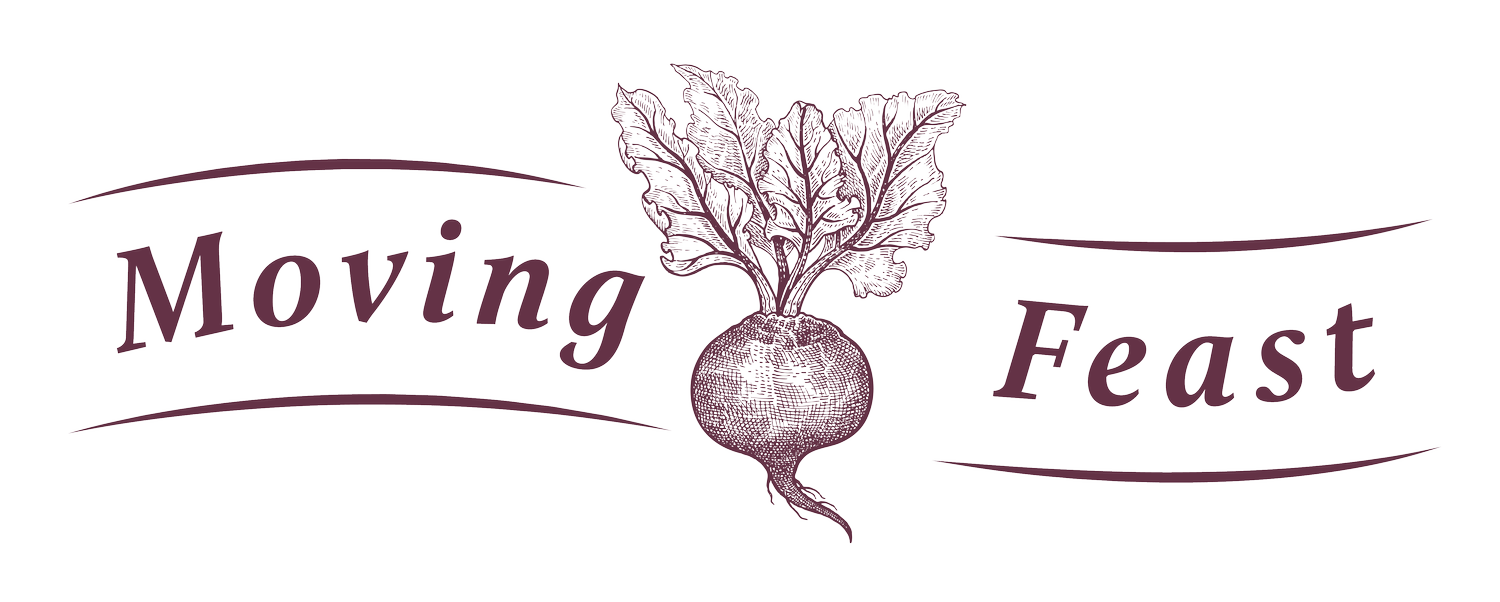Fighting Bread Waste at the Moving Feast Kitchen
Bread is an everyday staple for many Australians but what are the consequences of the uneaten half loaf that goes stale? It is thrown out. This is the easy and ‘normal’ reaction to stale bread, however, the ripple effect of this is bread is now one of the most wasted food items in Australia. Here at the Moving Feast Kitchen, we have found a variety of ways to combat bread waste and repurpose this everyday staple.
19,400 tonnes of bread end up in the bin every year (EndFoodWasteAustralia, 2022).
It first started with our Moving Feast Kitchen Eco-Chef, Chris Locke innovating with bread donated to us by the Woodfrog Bakery, in an attempt to reimagine how we could preserve such a delicious staple. That’s when the idea of ‘Bread Waste Pasta’ was born. By transforming ‘stale’ bread into breadcrumbs which in turn are incorporated into a traditional pasta recipe.
After much experimentation, Chris perfected the recipe, and the final result was a delicious pasta that has now been sold in our STREAT cafes. The cafe special: Bread Waste Pasta with Moving Feast Caponata, Italian greens and three cheeses – it was moreish, and customer feedback was extremely positive!
“Often perceived as an inexpensive and readily available item, bread’s accessibility can mask the significant amount that is wasted. During my initial weeks at the market, I witnessed the substantial amount of bread discarded daily by bakeries. Many lack the storage capacity to keep unsold bread for the next day, and concerns about devaluing their fresh products further contribute to this issue.
Recognizing the need for solutions, we sought inspiration from innovative chefs and various resources. This led us to experiment with two creative applications for repurposing stale bread.
The first innovation is pasta made from bread waste. By drying stale bread and processing it into a flour-like consistency, we combined it with eggs and additional plain flour to create a pasta that is nearly indistinguishable from traditional varieties. This approach not only reduces waste but also produces a very delicious high-quality product.
The second application is lavosh crackers, a traditional Armenian unleavened flatbread often served with cheese and charcuterie. We developed a method to create a new dough by binding stale bread crumbs with aquafaba and oil. This mixture can be spread thinly on a tray and baked until crisp, transforming old bread into a delicious cracker. ”
Innovation of food waste is at the heart of what we do at the Moving Feast Kitchen and the next bread-based experiment was a crisp, tasty ‘Lavosh Cracker’. This inventive cracker is now a Moving Feast Kitchen staple, used at our tastings, as a crispy base for our jarred preserves, pickles and chutneys, it is the perfect ‘side cracker’.
Creating this delicious snack was as simple as utilizing Wood frogs incredibly tasty Pumpkin Loaf with flax seeds, adding water to make a paste and baking it off to form the mouthwatering cracker. An easy trick that anybody could replicate at ho me to create long lasting products!
Through these culinary innovations, we are not only reducing food waste but also creating delicious dishes that contribute to a more sustainable food system. It reiterates that ‘waste’ is just a matter of perception, and if we continue to challenge these ideals, we could collectively make a significant impact.
Come down and try a cracker! Or even better starting next week (DATE) we are selling our fresh Bread Pasta at the Moving Feast Kitchen every Saturday.
You can visit the Moving Feast Kitchen at the Purpose Precinct, in the F sheds, at the Queen Victoria Market, Melbourne. It is open between 9am-3pm on Tuesday, Thursday, Saturday and Sunday.









